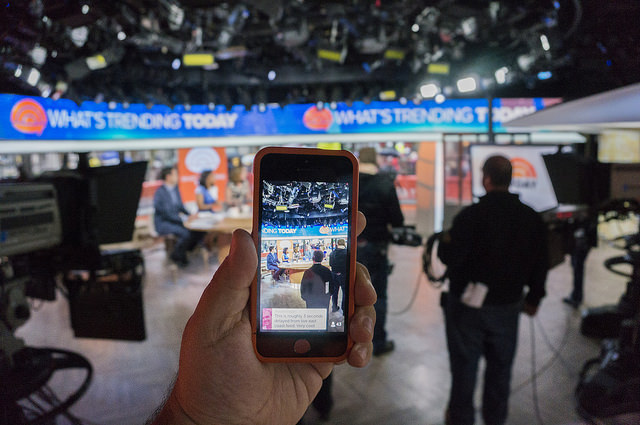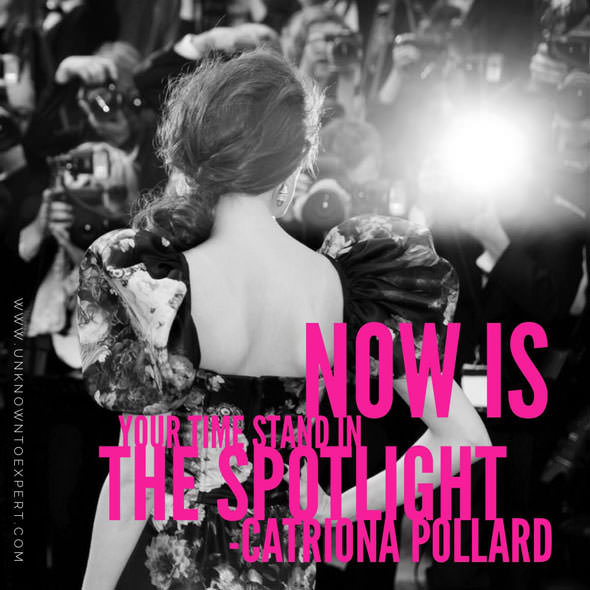Just when you thought social media couldn’t become any more ubiquitous, livestreaming app Periscope has burst onto the scene.
Since its acquisition by Twitter in March for a rumored $100 million, Periscope’s been getting comfortable at the round table of social media kings. After lots of looking, testing and listening, it’s proving to have the potential to bring new opportunities and challenges for the business world.
So, how does it work?
Periscope is simple. It has 4 main areas:
1. Camera
This allows you to broadcast to the wider public. All you do is fill in the title that asks, “What are you seeing now?” and hit the Start Broadcast button. You have the option to make it private and broadcast to select followers, as well as send a notification to your Twitter feed. Your recorded video will be able to be viewed for 24 hours following its broadcast, but you can delete it with a simple swipe.
2. Following
This page shows you the stream of anyone you’re following when they go live. You can be notified when they start livestreaming, and with a simple click, you’ll be watching the world through their eyes (or rather, the eyes of their phone).
3. Global
This page shows you the current streams of users around the world. All you see is the title of their stream and the number of viewers currently tuned in.
4. People
As Periscope is synced in with Twitter, this page shows you a list of the people you’re following on Twitter and allows you the option to follow them on Periscope.
What about when you’re watching a stream?
You’ll see the world through the user’s front or back-facing camera and have the ability to typecomments and see everyone else’s comments. The number of viewers is indicated at the bottom and if you touch the screen, it’s the equivalent of giving them ‘likes’ as little hearts are displayed.
Periscope allows you to see into the un-edited and un-filtered lives of anyone around the world, watch as breaking news unfolds and get a front row seat to unique events; all from a live, first- person perspective. For example, you could sit next to a news anchor as he does his live news broadcast, jump on a tourist’s helicopter as it flies over your favourite city, take a tour of a foreign neighbourhood with a local, dance in the throngs of a street festival, or see your favourite musician jam away from their rehearsal studio or packed-full arena
Game-changing for business?
The difference between Periscope and everything that’s come before, is the unprecedented ability for the consumer to become the producer. It gives real backbone to the loosely-used term, ‘Prosumer’. Viewers on Periscope can interact with live content and quite often direct its outcome.
Breaking news and coverage will now be brought to us instantly as we have the option to watch as events unfold by tapping into the viewpoints of multiple Periscope’s livestreams, offering unparalleled first-person perspectives of those caught up in the action or event. In a way, the traditional producers of news – the broadcasters, reporters, and cameramen – are suddenly thrown into the consumer’s seat. It’s a complete role-reversal.
The opportunities that Periscope offers to businesses are extraordinary.
Imagine livestreaming a view of the coffee line at your café to give potential customers an idea of the waiting time, or holding real-time Q&A sessions with your designers, developers, strategists or customer care teams. You can conduct live surveys and tours of your offices and production sites, or stream product launches and give demonstrations of products in development.
We’ve all used Skype, FaceTime and Google Hangouts, but the ability to connect directly to a wider audience in real-time in this manner is unprecedented and will revolutionise the way we engage with our communities on a global stage.
Lingering Questions
There’s two key areas of contention being thrown around in the Periscope hubbub:
1. Privacy
Your Periscope broadcast will be broadcast to the public unless you choose the privacy option. Anything you film will therefore be broadcast to the public, which raises issues concerning the privacy of you and others. It will take some time before a Periscope ‘etiquette’ is established, and a whole other range of questions will be raised when it comes to the issue of consent and privacy laws.
Further, Periscope’s privacy policy says it will “use and store information about your location” or “infer your location based on information from your device” and they reserve the right to “share your precise location with your video”. Similarly, your video contains a host of data derived from sights, sounds, location and chat log that Periscope (and Twitter) have the right to collect and share with third parties. Of course, you’ll be familiar with all the other anxieties surrounding use of our data, and this could add weight to the arguments of the naysayers.
2. Piracy
Periscope poses a huge threat to ticketed and pay-per-view events. A lot of events already impose a ban on mobile phone images and recording, but Periscope is navigating unchartered territory, as evidenced during the recent Mayweather vs. Pacquiao match, where Periscope received 66 ‘takedown’ notices for breach of copyright (because who wants to pay $100 to watch the fight with pay-per-view?).
Responding to accusations that the platform is a “vehicle for pirating content” Periscope co-founder Kayvon Beykpour says that within a few minutes, they took down around half the streams that violated copyright and the other half had already finished broadcasting.
He also notes the necessity to strengthen their tools for monitoring and managing content that could be breaching copyright: “The DMCA process mandates that you should respond to these within 24 hours, which obviously isn’t relevant in a real-time setting. Obviously there are tools that should exist and can exist, with a lot of time development to handle this stuff in real-time, and we’re genuinely interested in working with partners on figuring that out… it’s new territory”.
What’s next?
Periscope is a vehicle for exploration, discovery, connectivity and (acceptable) voyeurism. Judging by consumer reviews, it’s already leaps and bounds ahead of its direct competitor, Meerkat, due to its additional features, usability, and seamless integration with Twitter.
Got a spare moment? Whip out Periscope and see a man in Turkey train his dog to flip, or take in the view out the window of a bus on a rainy day in Dublin. Catch the rodeo in Texas from a front- row seat, or relax on the still waters of a lake on a fishing trip in New Zealand. Why not hold a live Q&A with one of your influencers, lead product developers, or devoted customers? The possibilities are endless.
Have you thought about the ways that Periscope could revolutionise your business? Let us know in the comments.
Anna Craven is a Digital Content Coordinator for Social Media Week Sydney, and an Assistant Account Coordinator at Rinsed. You can follow Anna on twitter @AnnaCraven1
Photo credit: Anthony Quintano









 About the author
About the author